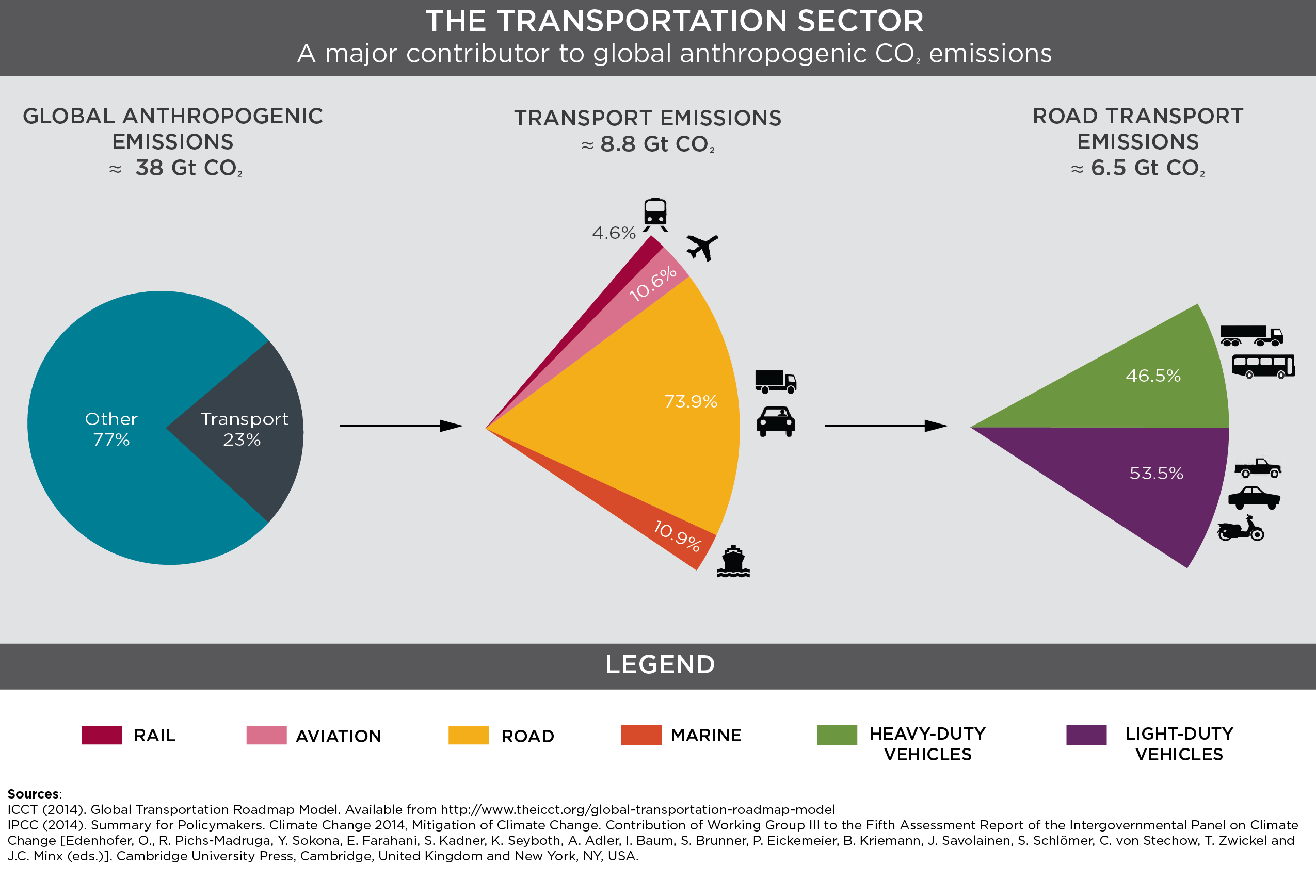Blog
A world of thoughts on Phase 2
Last month’s release of the final rulemaking on Phase 2 standards for heavy-duty vehicles, engines and trailers in the U.S. was — as ICCT researchers pointed out here, here, here and here — a really big deal. The U.S. EPA and NHTSA estimate that the Phase 2 standards will yield over $200 billion in net savings for the vehicles affected by the rule. The overall efficiency gains from Phase 1 (announced during President Obama’s first term) and Phase 2 of the HDV regulation will cut fuel use by heavy-duty trucks and buses in the U.S. by over one-third by 2050.
But while heavy-duty trucks and buses account for 22% of U.S. oil demand from road transport, that number rises to 34% globally.

Additionally, heavy-duty trucks and buses account for 46.5% of global CO2 emissions from road transport.

Regulatory action to address CO2 emissions and fuel use from heavy-duty vehicles is accelerating around the world. The U.S., China, Japan and Canada currently have established HDV efficiency regulations while the European Union, Brazil India, Mexico, and South Korea are all in various stages of developing similar policies. So we’ve been keeping an eye on how the Phase 2 announcement has been covered outside the U.S.
Some close attention has come from Europe. (See examples, here, here, here). Under the new rule, by 2027, U.S. tractor-trailers whould emit approximately 16% less CO2 than their European equivalents. But earlier this summer the European Commission announced that it will commence a formal regulatory process to establish a similar efficiency standard of their own for HD trucks and buses — assuming the EU took no similar action.
Emissions from heavy-duty trucks and buses already account for nearly a quarter of Europe’s road transport CO2 emissions and are set to increase by up to 10% between 2010 and 2030. ENDS Europe was very clear about the role the U.S. regulation will play as a spur: “EU policy-makers face mounting pressure to fast-track fuel efficiency targets for heavy-duty vehicles to ensure Europe’s truck manufacturing industry remains competitive… Concerns are now growing that the EU is falling behind the rest of the world in demonstrating similar leadership on cleaner, fuel-efficient trucks.” While the EU has fuel efficiency standards and carbon dioxide monitoring in place for passenger vehicles, the same is not the case for heavy- and medium-duty vehicles.
The Phase 2 announcement came less than two months after the North American Leaders Summit, at which President Obama, President Peña Nieto, and Prime Minister Trudeau signed on to the North American Climate, Clean Energy, and Environment Partnership Action Plan. The plan commits them to “driving down black carbon emissions from new heavy-duty diesel vehicles to near-zero levels continent-wide by implementing aligned, world-class, ultra low-sulphur diesel fuel and HDV exhaust air pollutant emission standards by 2018.”
Canada’s Liberal government has plans to propose new HDV regulations in the near term. “Regulating this sector is key to providing cleaner air for Canadians… The Government of Canada intends to align with the Phase 2 emission standards, while considering specific implications for the Canadian heavy-duty vehicle, engine and trailer sectors,” said Catherine McKenna, Canada’s minister of Environment and Climate Change, in a statement.
President Peña Nieto has more work to do to meet his part of the commitment. As the leading producer of tractor-trailers in the world and with the U.S. as its largest market, Mexico is well poised for alignment with best practice standards. But unlike Canada, Mexico has not kept pace with heavy-duty regulations, and is especially hampered by severely lagging emission standards. While President Peña made his commitment to this critical step clear at the Leaders Summit, there has still been no action to finalize the proposal for world-class standards published in 2014. By adopting modern emissions standards, Mexico could not only reduce pollutant emissions by more than 95%, but also enable the use of much more efficient engines, engines which will become even more efficient in the second phase of the program.
Our work on heavy-duty vehicles is far from over. While the U.S. Phase 2 rule offers significant improvements over Phase 1, challenges remain. In the future, revised ambient air quality standards are likely to add pressure for further reductions of NOx emissions from HDVs.
